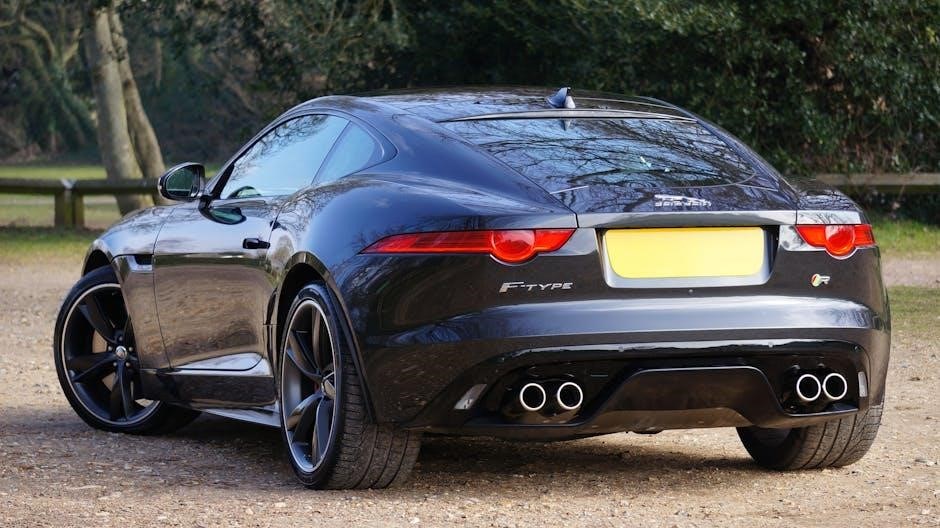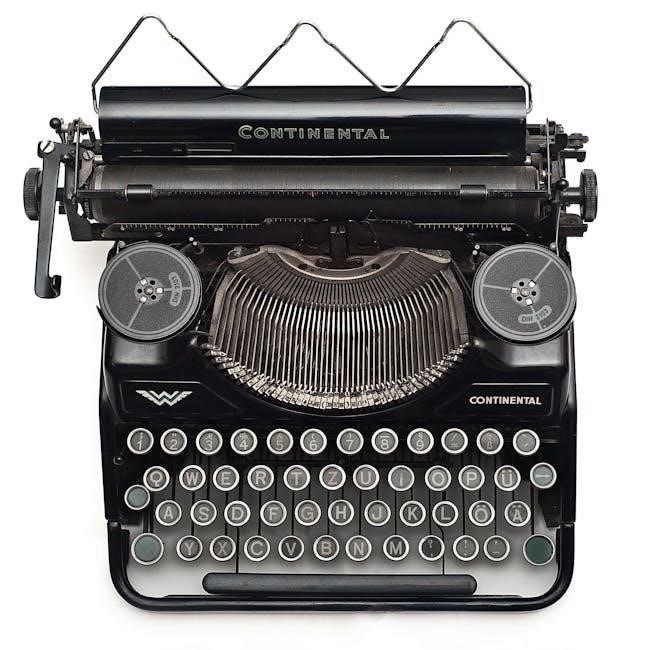Jaguar F-Type Manual Gearbox: A Comprehensive Overview
The Jaguar F-Type, a spiritual successor, offered a manual gearbox option, representing a nod to driving enthusiasts. This overview explores this rare offering, available with specific engine configurations. The manual F-Type, a unique blend of performance and driver engagement, remains a desirable choice.
The Jaguar F-Type, known for its striking design and performance, offered a unique variant for purists: a manual transmission. This introduction delves into the specifics of this rarer configuration, highlighting its availability and appeal within the F-Type lineup. Offered alongside the standard automatic, the manual gearbox provided a more engaging driving experience. This option was available on specific models. It catered to enthusiasts seeking greater control and connection with the car.
The F-Type manual stands as a testament to Jaguar’s commitment to catering to diverse driving preferences. This introduction will further explore the models and specifications. It will also delve into the driving experience, market value, and reasons for its discontinuation. It’s a comprehensive look at a unique chapter in the F-Type’s history. This will provide potential buyers with valuable insights.

Availability and Rarity
The Jaguar F-Type with a manual gearbox is relatively rare, contributing to its collectibility. Production numbers were limited, making finding one for sale more challenging compared to the automatic versions.
Production Numbers of Manual F-Types
The production numbers for the manual transmission Jaguar F-Type were notably low. Estimates suggest that less than four percent of all F-Types sold were equipped with a manual gearbox. This scarcity makes them highly sought after by enthusiasts who appreciate the engaging driving experience offered by a manual transmission in a sports car. It is estimated less than 1100 manuals were produced during the years they were offered.
The limited availability can be attributed to factors such as lower demand compared to automatic transmissions, leading Jaguar to eventually discontinue the manual option. Most of these models were produced in 2016 and 2017. This low volume contributes significantly to their rarity and potential future collectibility.
Finding Available Manual F-Types for Sale
Locating a manual Jaguar F-Type for sale requires patience and persistence, due to their limited production numbers. Online marketplaces and automotive websites are primary resources for finding available listings. Be sure to use specific search terms, such as “Jaguar F-Type manual transmission,” to narrow down your search effectively.
It’s advisable to monitor these platforms regularly, as new listings can appear and disappear quickly. Consider setting up alerts to receive notifications when a manual F-Type becomes available in your area. Dealerships specializing in used sports cars or luxury vehicles might also be a potential source, although their inventory of manual F-Types may be limited. Most manual listings are found during spring and summer.

Models and Specifications
The manual transmission F-Type was offered with specific engine choices. It came with a ZF 6-speed manual gearbox. Explore the engine and transmission details, including horsepower, torque and other key specs for these models.
Engine Options Available with Manual Transmission (340hp V6 and 380hp V6 S)
The Jaguar F-Type, when equipped with a manual transmission, presented enthusiasts with a choice of two distinct engine options, both supercharged V6 variants. The base model featured a 3.0-liter supercharged V6 engine, producing 340 horsepower. This engine delivered ample power and a thrilling driving experience, especially when paired with the engaging manual gearbox. For those seeking even greater performance, the F-Type S offered a more potent version of the same engine, tuned to produce 380 horsepower.
This enhanced output provided quicker acceleration and a more aggressive feel. Both engine options were rear-wheel drive, further enhancing the driving experience for purists. The combination of a supercharged V6 engine and a manual transmission created a unique blend of performance and driver involvement, setting the F-Type apart from its competitors. These specific configurations highlighted Jaguar’s commitment to providing options for driving enthusiasts who prefer the control and engagement of a manual gearbox.
Transmission Type: ZF 6-Speed Manual
The manual transmission offered in the Jaguar F-Type was a ZF 6-speed unit, known for its robust construction and precise shifting capabilities. ZF, a renowned manufacturer of automotive transmissions, designed this gearbox to provide a satisfying and engaging driving experience. The 6-speed manual in the F-Type allowed drivers to fully exploit the power of the supercharged V6 engines, offering complete control over gear selection and engine RPM.
The transmission featured a relatively short throw, facilitating quick and precise gear changes, enhancing the sporty feel of the car. The clutch pedal offered a balanced feel, providing enough feedback to allow for smooth and confident operation. The ratios were carefully selected to provide optimal acceleration and fuel efficiency, ensuring a versatile driving experience both on the road and on the track. This ZF 6-speed manual transmission was a key element in the F-Type’s appeal to driving enthusiasts.
Driving Experience and Performance
The Jaguar F-Type equipped with the manual gearbox delivers a uniquely engaging driving experience. The combination of the supercharged V6 engine and the driver-controlled gear selection provides a level of connection often missing in modern sports cars. Drivers can precisely manage the engine’s power band, maximizing acceleration and responsiveness through each gear.
The manual transmission enhances the feeling of control, allowing drivers to exploit the F-Type’s performance capabilities to their full potential. The short throws and precise action of the shifter contribute to a visceral experience, while the well-weighted clutch provides tactile feedback. With rear-wheel drive, the manual F-Type delivers thrilling performance, especially on winding roads, rewarding skilled drivers.
Compared to the automatic version, the manual F-Type encourages a more involved driving style, fostering a deeper connection between the driver and the machine. The sound of the engine, coupled with the mechanical engagement of the gearbox, creates an immersive and unforgettable driving experience.
Market Value and Collectibility
The Jaguar F-Type with a manual transmission holds a unique position in the market, influenced by its rarity and the increasing demand for driver-focused sports cars. Due to limited production numbers, these models are becoming increasingly sought after by collectors and enthusiasts. The discontinuation of the manual option has further solidified its potential as a future classic, driving up its market value.
The collectibility of the F-Type manual is fueled by the desire for a pure, unadulterated driving experience. As modern cars become increasingly automated, the manual gearbox represents a connection to a bygone era. The allure of engaging with the car on a mechanical level appeals to purists who appreciate the art of driving.
While current market values may vary depending on condition, mileage, and specific model year, the trend indicates a steady appreciation for well-maintained examples. The F-Type manual is not only a thrilling sports car but also a potentially sound investment for those who value rarity and driver engagement.

Reasons for Discontinuation
The manual Jaguar F-Type ceased production due to low consumer demand. With less than four percent of F-Types sold being manual, Jaguar discontinued the option. This decision reflects market trends favoring automatic transmissions.
Low Take Rate of the Manual Option
The primary reason for the Jaguar F-Type manual’s demise lies in its low take rate. Despite appealing to driving purists, the demand for a manual gearbox simply wasn’t high enough to justify its continued production. Estimates suggest that less than four percent of all F-Types sold were equipped with the manual transmission. This figure highlights a significant preference for the automatic options available, particularly the ZF eight-speed automatic, known for its quick and seamless shifts.
The low take rate can be attributed to several factors, including the increasing sophistication and efficiency of modern automatic transmissions. Many drivers found the automatic to offer a more convenient and engaging driving experience, especially in everyday scenarios. Additionally, the manual option was only available on the V6 models, further limiting its appeal to those seeking the more powerful V8 engine. Ultimately, the low demand made it economically unviable for Jaguar to continue offering the manual gearbox on the F-Type.

Alternatives and Comparisons
For those seeking a similar driving experience to the manual Jaguar F-Type, several alternatives exist in the sports car market. The Porsche 911, a perennial favorite, offers a manual transmission in certain trims, known for its precision and driver engagement. Another option is the BMW M2, a compact sports car that delivers exhilarating performance with an available manual gearbox.
When comparing these alternatives, factors such as price, performance, and features should be considered. The Porsche 911 typically commands a higher price point, while the BMW M2 offers a more affordable option. In terms of performance, each car offers a unique driving experience, with the F-Type emphasizing a blend of luxury and sportiness. Ultimately, the best alternative depends on individual preferences and priorities. Exploring these options allows buyers to find a sports car that perfectly matches their needs and desires for a engaging driving experience.
Buying Considerations
When considering purchasing a manual Jaguar F-Type, checking its history via CARFAX reports is crucial. Also, be aware of model year differences, such as those between the 2016 and 2019 versions, to make an informed decision.
Checking CARFAX Reports
When contemplating the purchase of a used Jaguar F-Type with a manual transmission, a CARFAX report becomes an indispensable tool. This report provides a detailed history of the vehicle, revealing potential red flags that might not be immediately apparent. Examining a CARFAX report helps uncover crucial information about the car’s past.
The report can disclose accident history, indicating whether the F-Type has been involved in any collisions and the extent of the damage. It also reveals the number of previous owners, offering insights into how well the vehicle has been maintained over time. Furthermore, a CARFAX report tracks service records, showcasing whether routine maintenance has been performed regularly.
Potential buyers can also identify any title issues, such as salvage or flood damage, which could significantly impact the car’s value and reliability. By thoroughly reviewing a CARFAX report, buyers can make a more informed decision. This will help them avoid purchasing a vehicle with hidden problems and ensure a smoother ownership experience. Ultimately, checking a CARFAX report is a critical step in the due diligence process.
Model Year Differences (e.g., 2016 vs. 2019)
When considering a used Jaguar F-Type with a manual transmission, understanding the nuances between model years, such as the 2016 and 2019 versions, is crucial. While the core driving experience remains similar, subtle improvements and changes were implemented throughout the production run. Examining these differences can help buyers pinpoint the ideal model year to suit their preferences.
The 2019 models may feature updated infotainment systems, potentially offering enhanced connectivity and user interfaces compared to the 2016 versions. Minor cosmetic tweaks might also be present, such as revised exterior styling or interior trim options. Furthermore, any refinements to the engine or transmission could improve performance or reliability in the later model years.
Buyers should also investigate whether any specific technical service bulletins (TSBs) or recalls were issued for certain model years, addressing potential issues. Researching these aspects can help inform your purchasing decision. Understanding the specific changes between model years empowers buyers to select the F-Type. This will ensure they find the one that best aligns with their needs and expectations.
